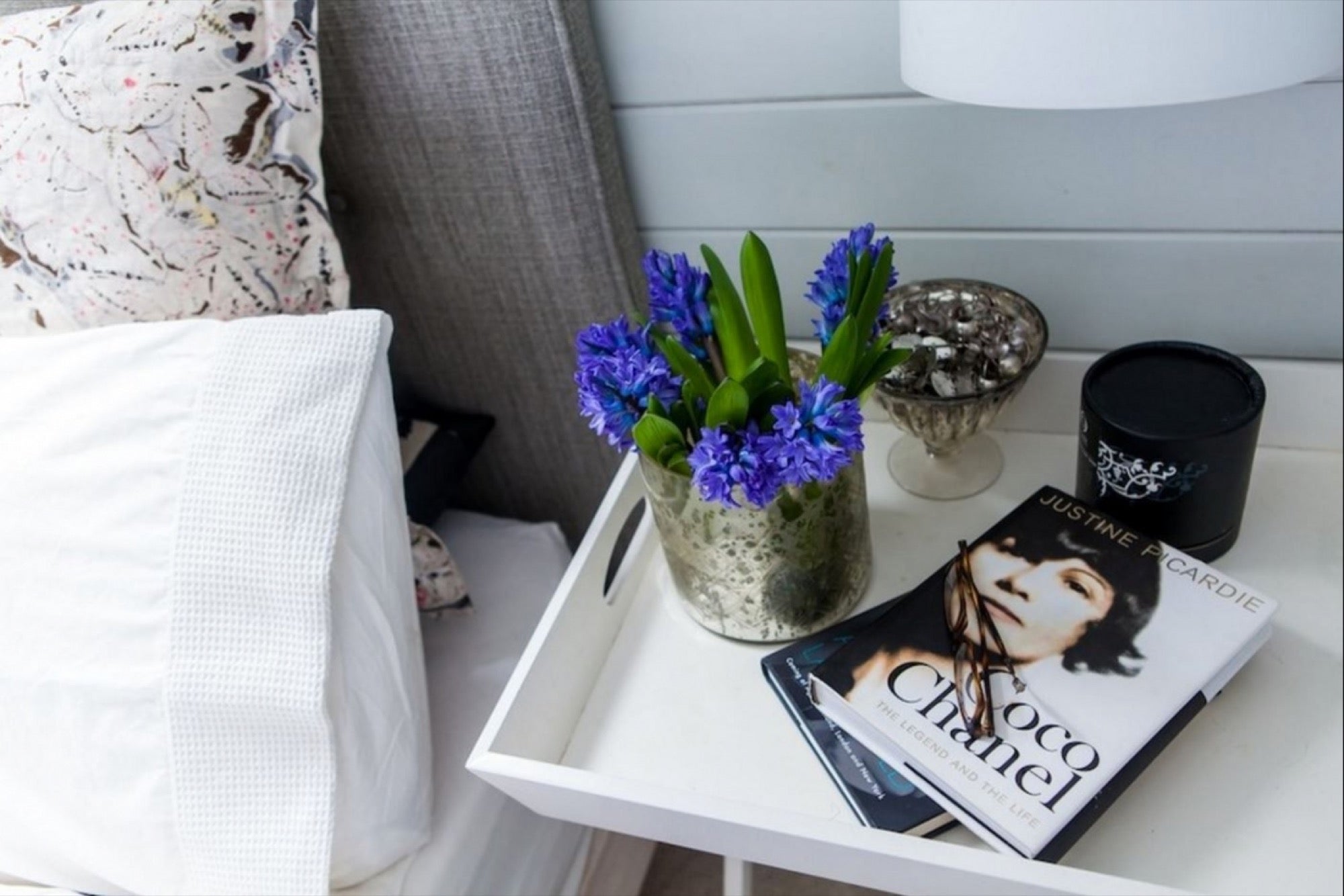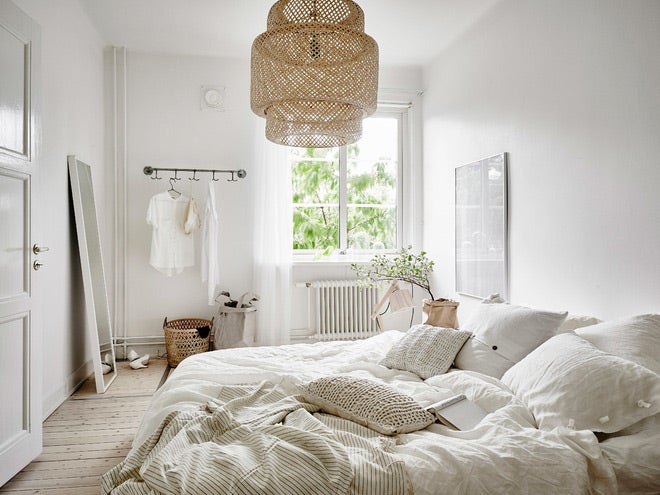How to Organize Your Bedroom for Better Sleep Rethink your nightstands, TV, once-worn clothing and more for restful nights of slumber.
By Houzz
Opinions expressed by Entrepreneur contributors are their own.

Imagine a clutter-free space dedicated to luxuriously restful slumber — a room where everything from the scent in the air to the sheets is carefully chosen to enhance feelings of relaxation, peace and (yawn…) sleep. You've got the blackout shades, now here are 10 little things, from bedtime rituals to smart storage solutions, to help turn your bedroom into the ultimate sleep cave.
What to keep on your nightstand. Keep the top of your nightstand simple and clutter-free, with just a few of these bedtime items:
- Bud vase of fresh flowers
- Current book
- Candle (unlit) with a relaxing scent (try lavender)
- Cup of herbal tea or carafe of water

Make comfort your priority. Too many fussy details like beading and sequins, or stiff and scratchy bedding materials, make for a less than restful night's sleep. When choosing bedding, make sure whatever you choose is delightfully touchable — think crisp cotton sheets and a cozy cashmere throw.
- Linen is cool in summer and can last forever if well cared for. It can feel nubby (even a bit rough) or smooth and quite soft, so try to feel your sheets in person before you buy.
- Cotton percale is what you want if you love the feel of "crisp" sheets. This classic fabric is smooth but firm and performs well in warm weather.
- Cotton sateen is very soft and smooth, almost silky in feel. It may not be the best choice in hot weather.

Try one of these soothing bedtime rituals:
- Brew a cup of herbal tea (try chamomile with honey)
- Read something soothing or uplifting, like a few beautiful poems or an inspirational book
- Gradually lower the lights over the last hour before bedtime, ending with just a candle, and then blow it out
- Take a bath with relaxing lavender or rose oil
- Spritz lavender-scented linen spray on your sheets and pillow
- Listen to the same relaxing playlist each night before drifting off

To carpet or not to carpet? Carpeting feels plush underfoot, making it especially appealing to step out on first thing in the morning, and it can help muffle sounds for a more restful mood. However, if you have a dust allergy, carpeting is notoriously difficult to keep dust-free, so it's best to skip it. If you love the feel of carpet but need to be able to thoroughly clean the floors often, compromise with a washable area rug atop hard flooring.

Rethink the TV. Screens emit a blue light than can make it more difficult to fall asleep. Keep the TV (and other devices) out of the bedroom, and commit to reading a real book (on actual paper, not an e-reader!) before bed.

Clean the air. Allergies or no allergies, we can all benefit from sleeping in a cleaner, healthier bedroom. Here are a few ways to keep the air in your bedroom fresh and pure all year long:
- Use an air purifier with a HEPA filter to remove dust, pollen and air pollutants
- Keep a houseplant or two in the bedroom (rubber plants are especially good at cleaning the air)
- Make the bedroom a no-shoes zone
- Vacuum and dust weekly (including under the bed), more often if you have allergies
- Open the windows to air out the space for at least 30 minutes each morning
- Choose natural fibers and materials that don't contain harmful VOCs
Related links:
Find the Perfect Nightstand on Houzz
Browse Thousands of Stunning Bedroom Photos
14 Steps to a Perfectly Polished Bedroom








